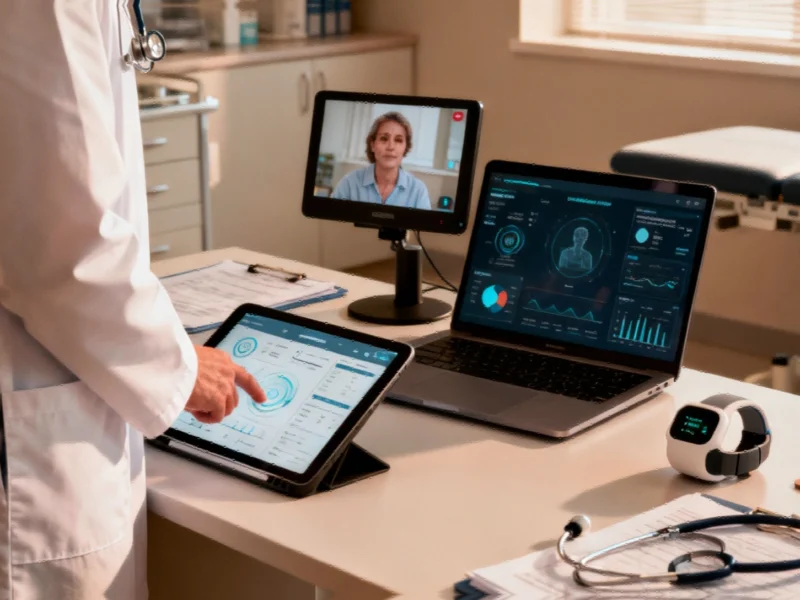In today’s rapidly evolving healthcare landscape, technology is becoming an indispensable ally for medical professionals rather than a replacement for their expertise. As physicians increasingly embrace AI integration in clinical practice, we’re witnessing a fundamental shift in how care is delivered and experienced by patients.
The Collaborative Future of Medicine
Modern healthcare is experiencing a technological renaissance, with innovations ranging from electronic health records to remote monitoring devices transforming patient care. The most significant development, however, lies in the growing partnership between physicians and artificial intelligence. Recent data shows that approximately two-thirds of physicians now regularly incorporate AI tools into their practice, signaling a major shift in medical workflows.
This collaboration represents a fundamental reimagining of the physician’s role. Rather than being replaced by machines, doctors are leveraging technology to enhance their diagnostic capabilities, streamline administrative tasks, and focus more attention on the human aspects of care that require emotional intelligence and clinical judgment.
Augmenting Clinical Expertise
The true power of AI in healthcare lies in its ability to process vast amounts of data quickly and identify patterns that might escape human notice. This capability becomes particularly valuable when considering how policy decisions and economic factors influence healthcare delivery systems. AI can help physicians navigate complex regulatory requirements and optimize treatment plans within evolving healthcare frameworks.
In diagnostic imaging, for example, AI algorithms can rapidly analyze scans for potential abnormalities, allowing radiologists to focus their expertise on confirmed areas of concern. Similarly, in primary care, AI-powered tools can help identify patients at risk for chronic conditions based on subtle patterns in their medical history, laboratory results, and lifestyle factors.
Reducing Physician Burnout
One of the most significant benefits of AI integration is its potential to address the growing crisis of physician burnout. By automating time-consuming administrative tasks—such as documentation, appointment scheduling, and insurance processing—AI frees up physicians to spend more quality time with patients. This shift is crucial for maintaining the human connection that forms the foundation of effective medical care.
The efficiency gains from AI implementation mirror developments in other sectors, similar to how regulatory clarity in technology sectors can unlock significant value. In healthcare, clear guidelines around AI implementation can help maximize benefits while maintaining appropriate oversight.
Enhancing Patient-Centered Care
Contrary to fears about depersonalized medicine, AI actually enables more personalized patient care. By analyzing individual patient data against vast medical databases, AI can help physicians develop tailored treatment plans that consider unique genetic factors, lifestyle considerations, and treatment responses. This approach represents a move away from one-size-fits-all medicine toward truly individualized care.
The financial aspects of implementing these technologies require careful consideration, much like how strategic funding enables growth and innovation in other industries. Healthcare organizations must balance technological investment with maintaining affordable care.
Navigating Implementation Challenges
Successful AI integration requires addressing several critical considerations. Data privacy and security remain paramount, as healthcare organizations must protect sensitive patient information while leveraging it for improved outcomes. Additionally, physicians need comprehensive training to effectively use AI tools while maintaining their clinical judgment.
The global nature of healthcare innovation means that international trade policies and economic relationships can impact technology adoption across healthcare systems. Understanding these broader contexts helps physicians and healthcare organizations make informed decisions about technology implementation.
The Human Element Remains Central
Despite technological advances, the physician’s role in interpreting AI recommendations within the context of each patient’s unique circumstances remains irreplaceable. Medical decisions often involve nuanced considerations that extend beyond data points—including patient preferences, cultural factors, and ethical considerations that require human judgment.
This balanced approach to technology adoption reflects a broader trend across industries, similar to how organizations maintain their core mission while embracing innovation. In healthcare, this means using technology to enhance rather than replace the physician-patient relationship.
Looking Ahead: The Evolving Physician-Technology Partnership
As AI continues to evolve, the conversation must focus on optimizing the collaboration between human expertise and technological capability. The most successful healthcare systems will be those that view AI as a tool to amplify physician skills rather than replace them. This partnership approach promises to deliver better outcomes for patients while supporting the well-being of healthcare providers.
The future of medicine lies not in choosing between human physicians and technology, but in harnessing the strengths of both. By embracing AI as a collaborative partner, physicians can enhance their diagnostic accuracy, improve treatment personalization, and ultimately provide more compassionate, effective care to their patients.
Based on reporting by {‘uri’: ‘fastcompany.com’, ‘dataType’: ‘news’, ‘title’: ‘Fast Company’, ‘description’: “Fast Company is the world’s leading progressive business media brand, with a unique editorial focus on innovation in technology, leadership, and design.”, ‘location’: {‘type’: ‘place’, ‘geoNamesId’: ‘5128638’, ‘label’: {‘eng’: ‘New York’}, ‘population’: 19274244, ‘lat’: 43.00035, ‘long’: -75.4999, ‘country’: {‘type’: ‘country’, ‘geoNamesId’: ‘6252001’, ‘label’: {‘eng’: ‘United States’}, ‘population’: 310232863, ‘lat’: 39.76, ‘long’: -98.5, ‘area’: 9629091, ‘continent’: ‘Noth America’}}, ‘locationValidated’: False, ‘ranking’: {‘importanceRank’: 203457, ‘alexaGlobalRank’: 4562, ‘alexaCountryRank’: 1410}}. This article aggregates information from publicly available sources. All trademarks and copyrights belong to their respective owners.



